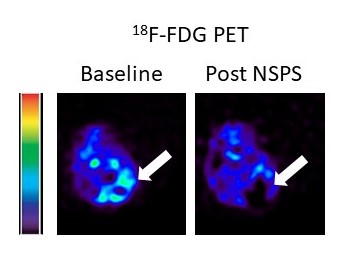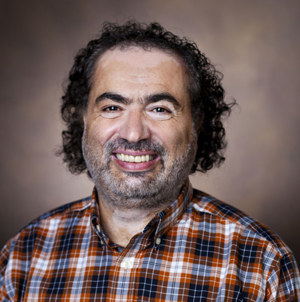A multidisciplinary research team at Vanderbilt University and Vanderbilt University Medical Center has discovered a new way to kill a tumor by disrupting its acidic “microenvironment” without harming normal tissue.
The target of this unorthodox approach is hydroxyapatite (HAP), a naturally occurring mineral that is a major component of bone and teeth, but which also is produced by some tumors.
In the extracellular microenvironment that surrounds and nourishes tumors, HAP crystals can enhance tumor cell proliferation, progression and migration (metastasis). However, HAP is absent in normal soft tissue, making it an attractive target for cancer imaging and treatment.

Using various molecular analytical methods, the researchers identified and synthesized a nanoparticle that, when delivered via an injectable solution called NSPS, chelated, or bound to calcium on tumor-associated HAP crystals, causing them to dissolve.
Dissolution triggered localized alkalosis, a sudden reversal in the acidity of the tumor microenvironment that was strong enough to kill breast cancer cells grown in culture, and to slow tumor growth in animal models of human breast, colon, lung and prostate cancers.
At the same time, NSPS demonstrated limited interaction with normal soft tissue and bone, the researchers reported Jan. 18 in the journal Cancer Medicine. These findings suggest that NSPS may be, in their words, “a one-of-a-kind and first in a class of novel cancer therapeutics.”

The paper’s corresponding author, Mohammed Tantawy, PhD, MBA, is a research associate professor of Radiology & Radiological Sciences and a member of the Vanderbilt University Institute of Imaging Science at VUMC.
The microenvironment of tumors generally is more acidic than surrounding normal tissue. Acidity, by altering the structure or uptake of cancer drugs, may contribute to the resistance to chemotherapy exhibited by tumors such as triple negative breast cancer, which has a high rate of recurrence and poor overall survival.
“There is an urgent clinical need for new treatment paradigms that could improve the outcome for cancer patients with poor prognosis,” the researchers noted. While further studies in humans are necessary, “NSPS has significant potential to be a paradigm-changing approach to the treatment of cancer patients with poor prognosis.”
Tantawy added: “Within the Institute of Imaging Science, we are fortunate to be able to take projects like this from initial conception through the development of novel ligands for detection and treatment of cancer into in vivo demonstrations based on multimodal imaging and even into human subjects.”
Tantawy’s co-authors include:
Oliver McIntyre, PhD, Zhongliang Zu, PhD, Todd Peterson, PhD, Daniel Colvin, PhD, and John Gore, PhD, from the Vanderbilt University Institute of Imaging Science, and Department of Radiology and Radiological Sciences.
Fiona Yull, DPhil, Jerri Rook, PhD, and Barbara Fingleton, PhD, from the Department of Pharmacology (VU), and Andrew Wilson, PhD, Marta Ann Crispens, MD, and Ronald Alvarez, MD, MBA, from the Department of Obstetrics and Gynecology (VUMC).
Wade Calcutt, PhD, from the Mass Spectrometry Research Center, and Department of Biochemistry, and Dmitry Koktysh, PhD, from the Vanderbilt Institute of Nanoscale Science and Engineering, and the Department of Chemistry (VU).
Jeff Nyman, PhD, from the Department of Orthopaedic Surgery (VUMC), Julie Rhoades, PhD, from the Division of Clinical Pharmacology (VUMC), and Lisa McCawley, PhD, from the Department of Biomedical Engineering (VU).
The study was supported in part by National Institutes of Health grant R21CA252629 and by the U.S. Department of Defense.












